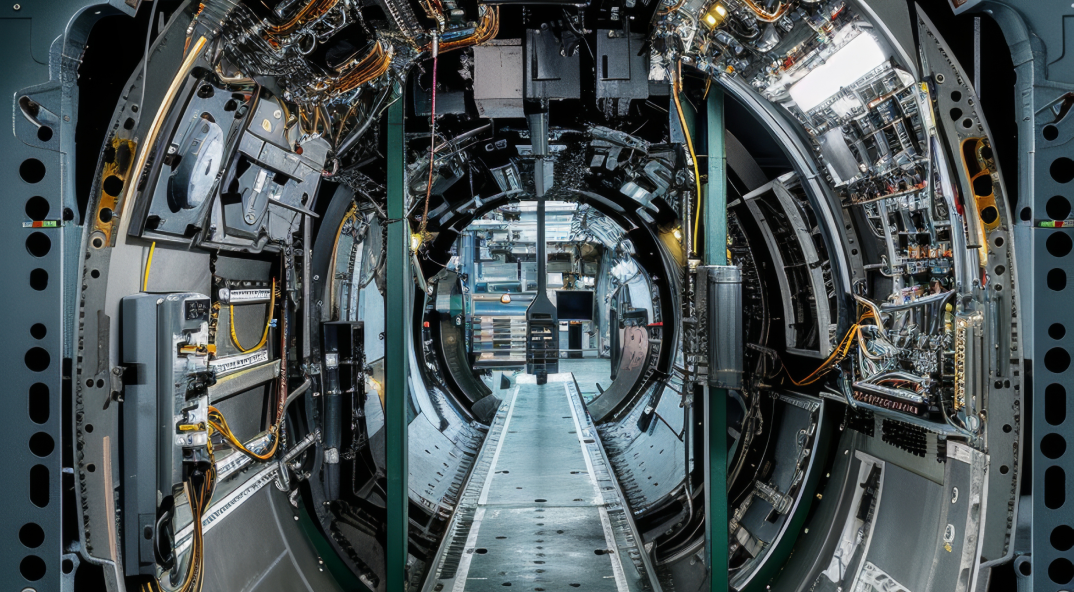Precision in Aircraft Structural Testing: Solutions for Data Acquisition Systems in Fighter Aircraft

Structural testing is the backbone of aircraft development, ensuring that every part of an aircraft can withstand the stresses and strains encountered during operation. Fighter aircraft are subjected to extreme conditions, and structural integrity is paramount to perform under combat conditions. Mission outcomes depend on rigorous testing protocols that simulate real-world scenarios.
The SCTF evaluates how different parts of the aircraft structure interact under differing weapons loads, speeds, and environmental conditions. It helps engineers understand the aircraft behavior, enabling them to refine design and enhance performance. The DAS provides the data needed to make decisions for aircraft design.
Key Features of the Data Acquisition System
The DAS used in the SCTF for fighter aircraft is a comprehensive solution that integrates multiple advanced features, making it one of the most sophisticated systems of its kind. Below are the key components and functionalities of the system:
- High-Speed Data Acquisition: The system supports over 2000 strain channels, each capable of sampling data at rates exceeding 50,000 samples per second. This high-speed data acquisition capability is crucial for capturing detailed information during structural tests, especially when dealing with high-frequency events or transient phenomena. The ability to collect data at such high rates ensures that no critical information is missed, allowing for a thorough analysis of the aircraft’s behavior under test conditions.
- Strain Measurement and Fatigue Analysis: Strain measurement involves measuring the deformation of the aircraft’s structure when subjected to external forces. The DAS’ structure-mounted transducers accurately measure strain across different aircraft parts. This data is then used for fatigue analysis, which predicts the lifespan of aircraft components by evaluating how they respond to repeated stress over time. Fatigue analysis is essential for identifying potential failure points and ensuring that aircraft operate safely throughout its intended service life.
- Health Usage and Monitoring System (HUMS): The DAS Health Usage and Monitoring System (HUMS) continuously monitors the health and usage of fighter aircraft. HUMS tracks various parameters, such as vibration levels, temperature, and load cycles, to assess the condition of the aircraft’s components, providing real-time insights into the aircraft’s health. HUMS enables predictive maintenance, reducing downtime and improving operational efficiency.
- High-Voltage and Digital Input/Output Channels: The system includes over 100 high-voltage channels and approximately 50 digital input/output (DIO) channels for handshaking and servo control. These channels are used for precise control and measurement during tests, ensuring test environments can be replicated and controlled. The high-voltage channels are important for tests involving electrical components, while the DIO channels facilitate communication between different parts of the system, enabling coordinated control and data collection.
- Signal Conditioning with Wideband Amplifiers: Accurate data acquisition requires careful signal conditioning to ensure that the signals from the transducers are not distorted by noise or other interference. The DAS uses wideband amplifiers for signal conditioning, which amplifies the signals while preserving their integrity. This ensures that the data collected is high-quality for reliable analysis.
- Comprehensive Software for Data Processing and Analysis: The DAS is complemented by specialized software that handles high-speed data acquisition, control, signal processing, analysis, and report generation. This software manages large volumes of data generated during tests, processing it in real-time to provide immediate feedback. The software does more than just collect data; it features advanced algorithms for signal processing and analysis, allowing engineers to derive meaningful insights from the information. The software generates detailed reports of the test results, providing a clear record of the aircraft’s performance.
Applications in the Development for the Next Generation of Fighter Aircraft
Fighter aircraft are built for specific usages. Some such aircraft are air superiority, multirole, interceptors, ground attack, carrier-based, stealth, training, and reconnaissance missions. Given their operational requirements, the aircraft must be exceptionally robust, reliable, and capable of performing in combat scenarios.
- Structural Coupling Tests: One of the primary applications of the DAS in the development of fighter aircraft is structural coupling tests. These tests evaluate how different parts of the aircraft’s structure interact when subjected to various loads and environmental conditions. By analyzing the data collected during these tests, engineers can identify potential weaknesses in the structure and make necessary adjustments to improve the aircraft’s performance. The high-speed data acquisition capabilities capture detailed information on how the structure behaves under dynamic conditions.
- Fatigue Testing: Fighter aircraft are subject to repeated stress during their operational life. Fatigue testing involves subjecting the aircraft’s structure to repeated loads to simulate the conditions it will encounter during service. The DAS measures the resulting strain and uses this data to predict the lifespan of the aircraft’s components. This information is vital for ensuring that fighter aircraft can operate safely over its intended lifespan, reducing the risk of in-service failures.
- Health Monitoring and Predictive Maintenance: By tracking key health indicators of fighter aircraft during testing and operational phases, HUMS provides real-time insights into the condition of the aircraft’s components. This enables predictive maintenance, where potential issues are identified and addressed before they lead to problems. For fighter aircraft, which are expected to operate in demanding environments, predictive maintenance is essential for maximizing availability and minimizing downtime.
The Case for Advanced Data Acquisition Systems
The benefits of the DAS extend far beyond the initial costs, offering substantial returns in terms of safety, reliability, and performance.
- Enhancing Aircraft Safety and Reliability: Pilot safety is the foremost priority for any air force, and advanced DAS systems provide detailed insights into the structural behavior of the aircraft. These systems enable engineers to design more robust and reliable structures, reducing the risk of in-service failures.
- Improving Operational Efficiency: By identifying potential issues before they lead to failures, predictive maintenance reduces the need for unscheduled repairs and minimizes aircraft-on-ground (AOG) incidents. This improves the availability of the aircraft and reduces maintenance costs over the aircraft’s operational life.
- Supporting Continuous Improvement: Engineers use data collected by the DAS to analyze the results of structural tests and fatigue analysis for design improvement and implement changes to improve aircraft performance. This continuous improvement ensures that the fighter aircraft meets modern warfare standards.
For fighter aircraft to perform in combat scenarios, the DAS enables safety, reliability, and performance. Aircraft performance pushes the boundaries of what is possible, and advanced systems like the DAS play an increasingly important role in shaping the future of aircraft design. By integrating high-speed data acquisition, strain measurement, fatigue analysis, and health usage monitoring, this system provides an end-to-end solution that supports the entire lifecycle of the aircraft, from development to operational deployment.







